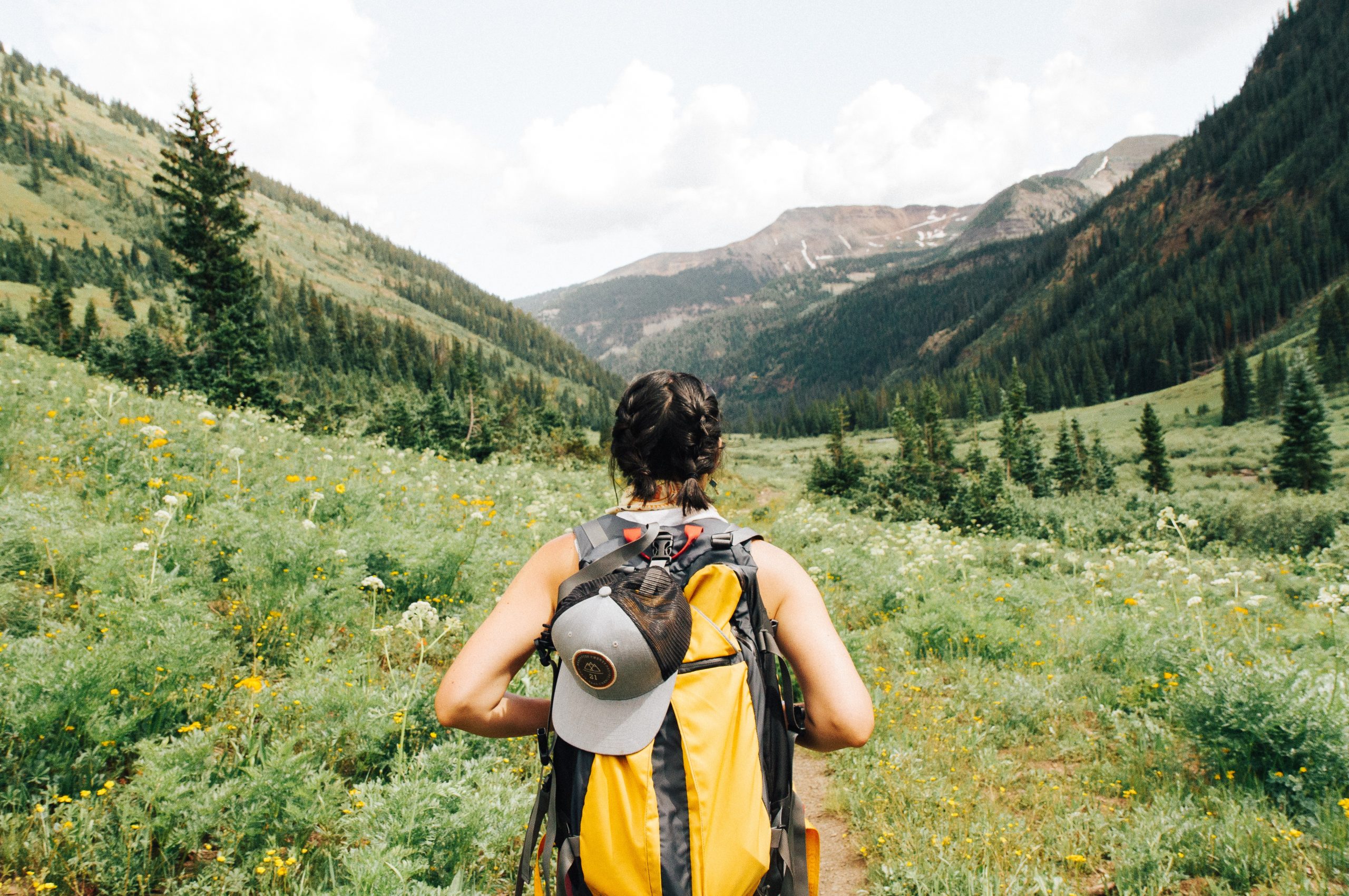Fresh air, mountain views, and the smell of pine. Doesn’t it just make your heart sing?
Nothing strikes wanderlust in me quite like seeing all the beautiful hiking views my friends are exploring on my Instagram feed. There’s just something about seeing fit, happy people perching on the edge of sunlit cliffs at the end of long hikes that just makes you want to get out there, commune with nature, and complete a great workout in the process.
On its face, hiking is a really easily accessible form of exercise with beautiful, scenic payoffs. After all, what is hiking but a strenuous form of walking?
And yet, the outdoor space can be quite intimidating if you don’t trek into it too often. Do you need a certain kind of gear to go on a hike? Why is everyone on the trail wearing expensive fleeces and I’m just here in a hoodie? And what about bears?
Luckily, you don’t actually need expensive, high-tech gear or a degree in outdoor survival to get a good workout in. With the right preparation, all you need is a trail, your own two feet, and enough fuel to carry you through your workout!
- Choosing A Trail – The first step in any hike is to select the trail that you’ll be following. It’s important to do at least a little bit of research on your chosen trail before you head out. AllTrails is a good community-based app that will help you find good trails in your target area and tell you all the information you need to know about the trek. Important things to note are the mileage, whether it’s out-and-back or a loop, whether or not it closes for certain parts of the year, if you need to pay to access it, et cetera.
It’s also important to select a hike that is a reasonable difficulty for you. Many hikes can feel grueling, and that is part of the challenge that makes it so much fun to finish – but is it out of your realm of physical endurance to climb up a couple thousand feet in elevation? Are there intersecting trails that you could get caught up on and get you lost? Be realistic about your own physical endurance.
- Choosing the Right Pair of Shoes – When you are on your feet for miles of rough terrain, your footwear matters. You generally don’t have to spend hundreds of dollars on the highest-tech boots you see to have a suitable pair of shoes to take out on the trail – a lot of the time, a good pair of trail-running shoes will suffice, especially for a beginner hiker exploring some easier trails.
However, you do want to keep in mind the kind of trail you will be doing and make sure that your footwear can handle it. Will you be climbing up the face of a smooth granite mountain or stomping through a muddy puddle? In that case, you may want to invest in a hardier pair of boots instead of your worn-in gym shoes. They will keep you from slipping, protect your ankles from rolling, and keep your feet much drier. One rule of thumb is to make sure that no matter what shoes you choose, you choose a pair that has a good amount of traction. You don’t want to find yourself on the face of a rocky cliff in well-worn sneakers with no grip.
- Clothing – This will vary greatly depending on where you are embarking on your hike and what season it is, but don’t feel like you need to have the most expensive hiking gear in order to have a good workout. A lot of the time, I can get by on hikes with things I have in my closet for workouts and cold weather. Keep your first layer light with sweat-wicking fabrics – preferably athletic gear so that you can move easily. From there, layers are key. When the weather may dip drastically, add on a warm thermal layer and then another jacket or vest on top that you can remove or keep on depending on the conditions. A nice pair of hiking socks can make a huge difference, and I always keep a beanie in my pack for when the weather really takes a cold turn.
However, I do live in a moderate climate in Northern California. Please keep in mind that if you are going to be hiking in an area with temperature extremes, you need to be properly prepared.
- Pack – It doesn’t have to be fancy, but you should have some kind of pack to carry your essentials. It can be as simple as your old school backpack if you are going on a short trek. However, it really does make a difference to carry a pack that was specifically made for hiking, particularly if you find that you have an achy back at the end of a long hike. I bought my REI Trail 25 Pack for Women on sale and have sworn by it for day hikes — having hip and chest straps to take the pressure off of my shoulders has made a tremendous difference for me, especially since I carry a heavy DSLR camera pack. Most packs that are made specifically for hiking will also come with lots of storage space to carry everything you could possibly need for your walk in nature, so they are a worthy investment if you plan on making hiking a regular activity.
- Nutrition – It is always a good idea to carry food with you, even if you think you won’t be out long enough to necessitate it. Something light, like an energy bar or banana, will give you a boost of energy if you start to feel tired, and I like to have at least a sandwich if I know I’ll be hiking more than a couple of miles. Don’t underestimate how taxing hiking is to your body – even if the trail is just a couple of miles long, you’ll likely be dealing with elevation changes and maneuvering difficult terrain. The right fuel can make all the difference. If your intent is to get a good workout, don’t just grab a portable bag of junk food and call it a day. The correct nutrition is key!
- Safety – Venturing out into nature can present its share of dangers. Injuries, wildlife, and even other people can make a trek into the woods a little more dangerous than your average trip to the gym.
If possible, going with a partner or two is a much safer bet than doing it alone. If something was to happen – say, you twist your ankle and can no longer walk on your own – your partner can be someone to lean on or go for help. Always let someone know where you are planning to go and when you expect to be back, especially if you are heading out alone.
It’s also a good idea to carry some form of protection for self-defense in the rare case that you need to fight off an animal or other human beings. A nice multitool can be a good, portable carry, or you can clip some pepper spray onto your pack to be easily accessible.
This is another reason why it is good to study up on your trail before you head out. Be prepared if you are walking into an area that is known to have predatory animals such as bears or mountain lions. Learn what poisonous plants in the area look like and always make sure you stay aware of your surroundings!
Enjoy those beautiful views, feel your quads burn, and don’t forget to stop and just breathe in the fresh air!


